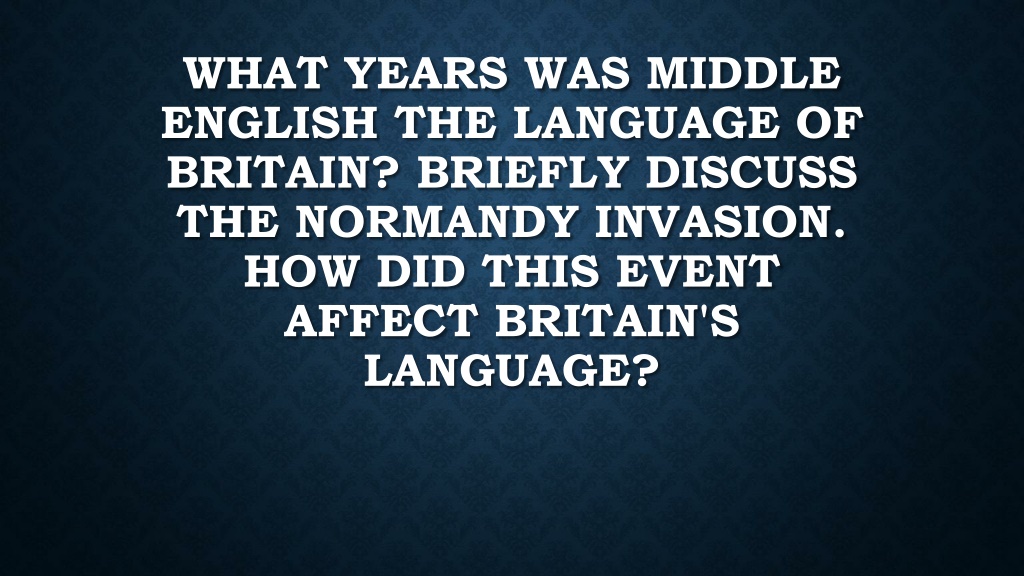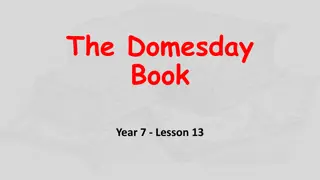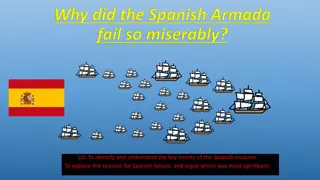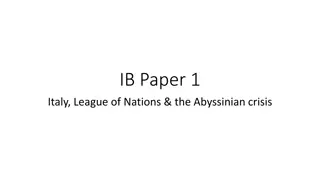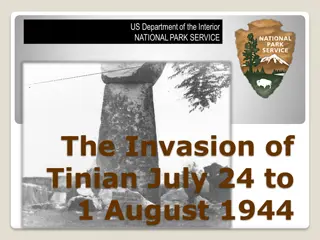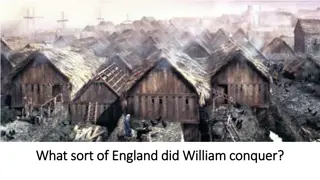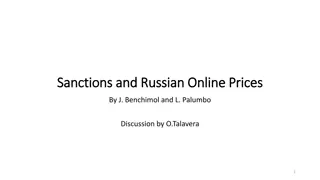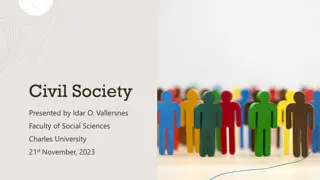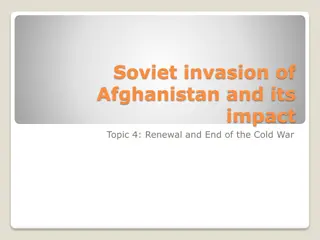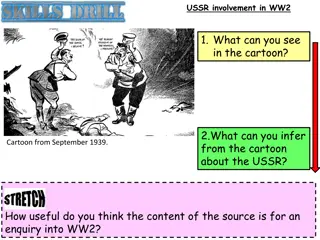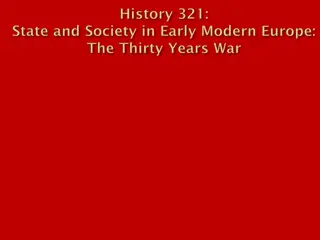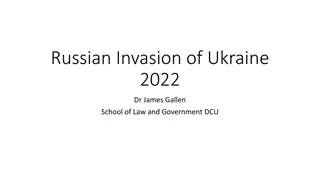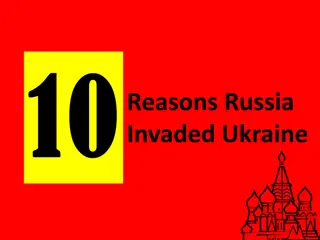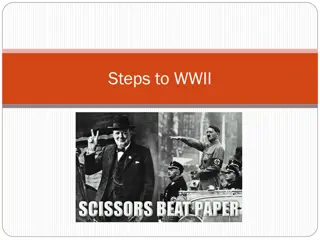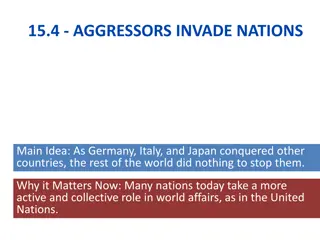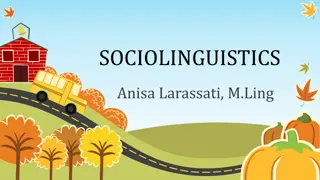Impact of the Normandy Invasion on Britain's Language and Society
Middle English became the language of Britain from 1066 to around 1500 after the Normandy Invasion led by William the Conqueror. This event introduced significant French influences to British language and culture. Additionally, the Canterbury Tales by Chaucer satirize members of different social classes during the medieval period, including the church, nobility, and peasants. The pilgrimage to the shrine of Thomas a Becket in Canterbury, related to the Canterbury Tales, reflects the religious practices and beliefs of the time.
Download Presentation

Please find below an Image/Link to download the presentation.
The content on the website is provided AS IS for your information and personal use only. It may not be sold, licensed, or shared on other websites without obtaining consent from the author. Download presentation by click this link. If you encounter any issues during the download, it is possible that the publisher has removed the file from their server.
E N D
Presentation Transcript
WHAT YEARS WAS MIDDLE ENGLISH THE LANGUAGE OF BRITAIN? BRIEFLY DISCUSS THE NORMANDY INVASION. HOW DID THIS EVENT AFFECT BRITAIN'S LANGUAGE?
Middle English was the language of Britain from 1066 to approximately 1500. Britain s language was Old English until it was invaded by William the Conqueror, Duke of Normandy and later William I of England. From France, he invaded England in 1066 what is called the Normandy Invasion. The Normans (Northmen, descendants of the Danes) spoke French influenced with German. This new leadership brought major French influences to language and culture. WHAN THAT APRILLE WITH HIS SHOURES SOOTE When in April with his showers sweet with fruit.
WHAT ARE THE MEDIEVAL SOCIAL CLASSES? THE THREE ESTATES? IN GENERAL, HOW DOES CHAUCER WRITE ABOUT ALL MEMBERS OF SOCIETY IN THE CANTERBURY TALES?
The three estates of Feudalism are the church, the nobility, and the peasants and workers. Chaucer satirizes people of all the estates in The Canterbury Tales.
WHAT IS A PILGRIMAGE? HOW DOES IT RELATE TO THE CANTERBURY TALES? WHO IS THOMAS A BECKET?
The church encouraged people to go on a pilgrimage, a trip that people made to visit special holy places called shrines. It is believed that if you prayed at these shrines you will be forgiven for your sins or have a better chance of entering heaven. Others went to pray for cures. In the Canterbury Tales, the pilgrims are making a pilgrimage to the shrine of Thomas a Becket to Canterbury. Becket was appointed Archbishop of Canterbury, by King Henry II, but after arguments with the king, he was murdered in his own cathedral in 1190. Eventually, he was canonized, declared a saint, by the Catholic church The shrine of Thomas a Becket, loaded with offerings of gold, silver, and jewelry donated by pilgrims seeking his healing powers, stood here between 1220 and 1538, when it was destroyed under orders of Henry VIII. Pilgrims would watch as the presiding canon pulled a rope which passed over a pulley to lift the wooden canopy and expose the riches of the shrine. Today in its place we see a simple burning candle, and depressions in the stone paving worn by the knees of the praying pilgrims.
DEFINE THE BUBONIC PLAGUE AS IT RELATES TO MEDIEVAL ENGLAND. HOW DID THIS PANDEMIC AFFECT CHAUCER S LIFE?
A pandemic caused by bacteria, Yersenia pestis, spread by rodents and fleas. 1 in 7 infected died. Arrived in Britain from Asia 1348 to about 1350. Exact death toll is tough to pinpoint, but 3-7 million died. Not called the Black Death until outbreak in the late 17thcentury. Chaucer s father, a wine merchant, became a wealthy landowner when he inherited property from relatives who had died in the Bubonic Plague of 1349. Therefore, with his newfound wealth, he was able to send his son off as a page to a countess and eventually served as an attendant to Prince Lionel. There he was in a position to advance and learn customs of the upper class. It allowed him to meet influential people.
DEFINE SATIRE. IN GENERAL, HOW DOES CHAUCER EMPLOY THIS TECHNIQUE IN THE CANTERBURY TALES?
Satire is a technique employed to expose and criticize foolishness and corruption of an individual or society by using humor, irony, exaggeration or ridicule. It intends to improve humanity by criticizing its foolishness and weakness. In Chaucer s time, the feudal system was starting to break down. The merchant class is growing and gaining in prosperity and the learned class, consisting of people not destined for church-life was also growing. Chaucer, son of a merchant and clerk to the King belongs to both of these groups. Chaucer puts all of society on parade. No one escapes his satire. Examples: the church (greed and corruption) and courtly love (Nun s priest).
DEFINE CHARACTERIZATION. LIST THREE CHARACTERIZATION TECHNIQUES. IN GENERAL, WHAT ARE SOME WAYS CHAUCER USES CHARACTERIZATION IN THE CANTERBURY TALES?
Characterization is the means by which a writer develops a characters personality. 1. Description of the character s appearance. 2. Presentation of the character s speech, thoughts, feelings and actions. 3. Presentation of other character s speech, thoughts, feelings and actions as they relate to the character. Chaucer describes clothing, occupation, social status and habits and activities as a means to develop characterization.
